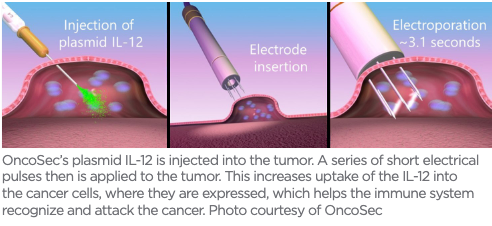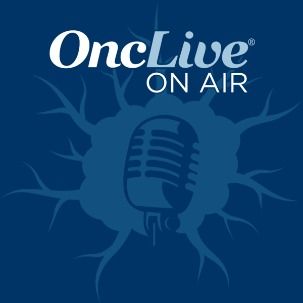Article
COVID-19 Vaccines Put Spotlight on DNA Technologies in Cancer Research
Author(s):
FDA approval of vaccines to prevent coronavirus disease 2019 is giving new focus to technologies with the potential to treat patients with cancer.
Christopher Twitty, PhD

FDA approval of vaccines to prevent coronavirus disease 2019 (COVID-19) is giving new focus to technologies with the potential to treat patients with cancer. Vaccines from Moderna and Pfizer/BioNTech vaccines use messenger RNA (mRNA), enabling the immune system to make the proteins and antigens needed to fight SARS-CoV-2, the virus that causes COVID-19.
But this is not a new technology. Investigators and biopharma companies have been working for some time to harness mRNA and other immune-stimulating technologies for cancer management. For example, BioNTech has 11 product candidates in 12 ongoing trials that aim to exploit the immune system, including mRNA-based immune activators, antigen-targeting T cells and antibodies, and defined immunomodulators of various immune cell mechanisms.1
Moderna is conducting the phase 1 trial KEYNOTE-603 (NCT03313778) of mRNA-4157 alone and in combination with pembrolizumab (Keytruda) in patients with solid tumors. The company formed an alliance in 2016 with Merck, the developer of pembrolizumab.2
The biotech company OncoSec Medical also is applying its immune-based technology to develop a vaccine against the COVID-19 virus. Early in the pandemic, company investigators started working on adapting tavokinogene telseplasmid (Tavo), its DNA-based interleukin 12 (IL-12), for this application.

Tavokinogene is in development for several cancers in combination with pembrolizumab, including in the pivotal phase 2 KEYNOTE-695 trial (NCT03132675) to treat patients with metastatic melanoma, as well as the phase 2 KEYNOTE-890 (NCT03567720) trial to treat patients with triple-negative breast cancer. Tavokinogene has received both orphan drug and fast-track designations by the FDA for the treatment of metastatic melanoma.3
The company’s cancer vaccine is administered directly into the tumor using electroporation, a series of electrical pulses. These pulses facilitate uptake of IL-12 coded DNA into cells, which helps avoid the systemic toxicity issues historically associated with IL-12.
Now the company has combined tavokinogene with the DNA-encodable SARS-CoV-2 spike glycoprotein, creating a new vaccine aimed at COVID-19. The vaccine, CORVax12, expresses a stabilized SARS-CoV-2 spike protein, but the addition of IL-12 may augment the depth and type of immune response.
In January 2021, OncoSec launched a phase 1 trial (NCT04627675) of CORVax12. Recent preclinical data on the vaccine presented at the Society for Immunotherapy of Cancer’s 35th Anniversary Annual Meeting, held virtually in November 2020, demonstrated that CORVax12 induced a strong immune response in mouse models by leading to the production of anti-spike IgG antibodies capable of disrupting the receptor-binding domain of the spike protein.4
Additionally, preliminary preclinical data have shown that CORVax12 administered into tumor tissue not only shows an antiviral response but also a strong antitumor response. This dual action would benefit patients with cancer, said Christopher Twitty, PhD, chief scientific officer at OncoSec.
“There are people with cancer who need to continue treatment and are unable to come off therapy to receive a vaccine, but they want to become protected from the coronavirus,” he said in an interview.
He said the company is evaluating whether to amend its trial of CORVax12 to add an additional cohort of patients with cancer or to do a separate trial as a vaccine for COVID-19 in patients with cancer.
Although CORVax12 is entering the vaccine race a little later than others, Twitty said the platform is flexible and can help address mutations of COVID-19 that are beginning to spread worldwide. “You can imagine a situation in which the emergence of new mutant viral strains may have the effect of diminishing the efficacy of the vaccines currently available,” he said.
Twitty said investigators are monitoring the variants of COVID-19 to see how CORVax12 reacts and whether IL-12 provides enhanced activity against the mutations. In addition, he pointed out that the company’s platform allows it to encode the newer sequences of the virus to the vaccine, if necessary.
“Since we’ve gone through the regulatory hurdles, there is a more streamlined approach to amending our plasmid as needed,” he said.
References
- BioNTech announces third quarter 2020 financial results and corporate progress. News release. BioNTech. November 10, 2020. Accessed February 2, 2021. bit.ly/2YBVlJc
- Merck and Moderna announce strategic collaboration to advance novel mRNA-based personalized cancer vaccines with Keytruda (pembrolizumab) for the treatment of multiple types of cancer. News release. Moderna. June 29, 2016. Accessed February 2, 2021. bit.ly/3cwreeB
- OncoSec enters into option agreement with Sirtex Medical to co-promote Tavo. News release. OncoSec Medical. January 19, 2021. Accessed February 2, 2021. bit.ly/2Mk8pRj
- OncoSec announces first subjects dosed in phase 1 trial of CORVax12, OncoSec’s COVID-19 vaccine candidate combining interleukin-12 (IL-12) with an enhanced SARS-CoV-2 spike protein. News release. OncoSec Medical. January 27, 2021. Accessed February 2, 2021. bit.ly/3oJ6QJs








